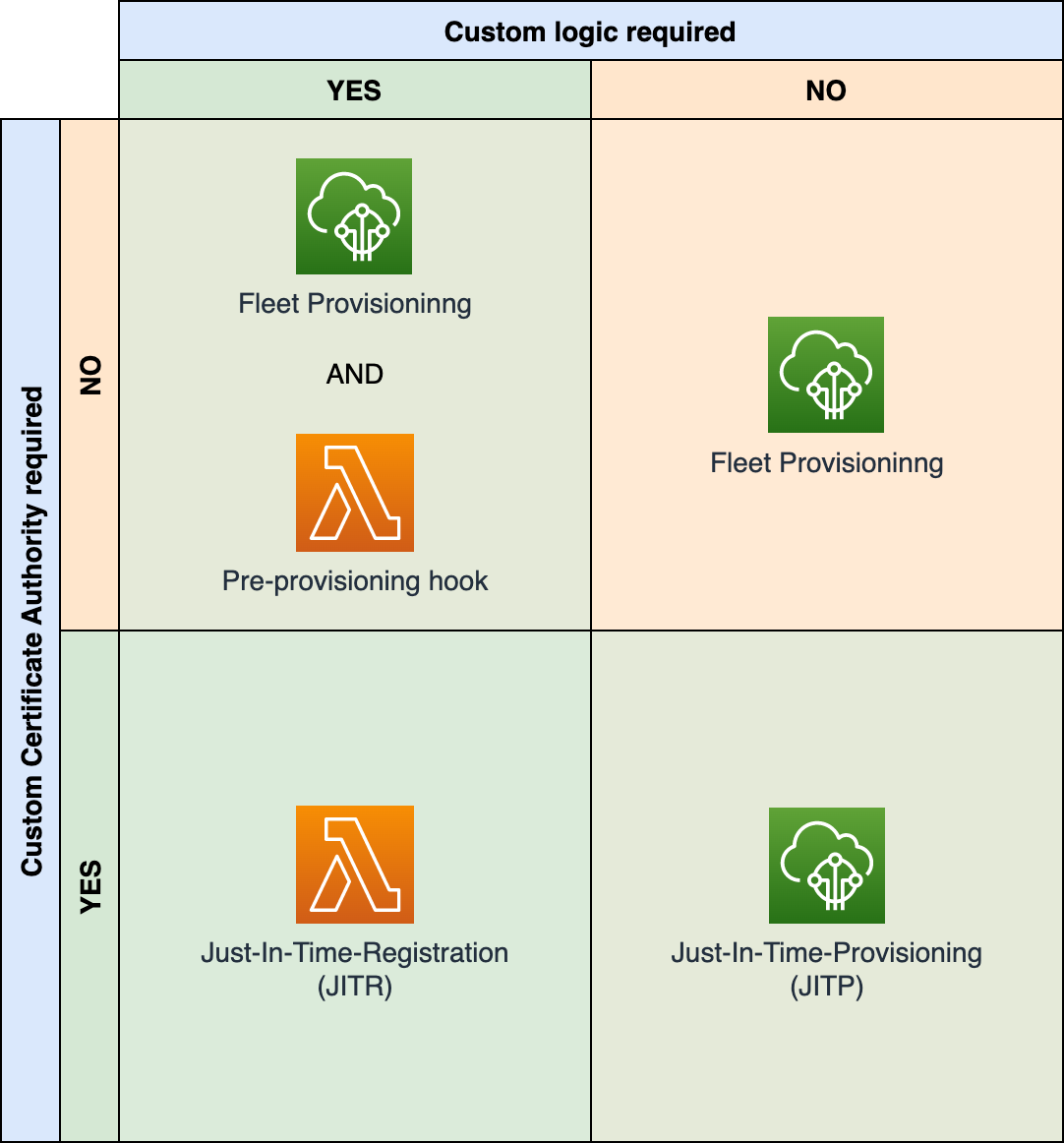
Overview
Fleet management is a very important concept in the Internet of Things domain.
Today I want to evaluate strategic options regarding the initial setup of the IoT fleet.
There are a few technical approaches to this topic. As always, I recommend starting with the business considerations.
Business considerations
Question: How do you define the IoT fleet?
LM: IoT fleet consists of many IoT devices connected to some kind of backend (i.e. AWS cloud). The backend platform manages connected devices and gathers data from those devices.
Question: What exactly needs to happen during the setup of the IoT fleet?
LM: I recommend setting an automated solution to execute setup tasks, for example:
- setup the backend (cloud) artifacts required for a specific connected IoT device to perform its tasks
- (when appropriate) inform other systems that a specific device connected to our backend for the first time
- establish a unique identity for every connected IoT device
Question: We are building a PoC project, do we really need to have an automated solution to handle all of the above tasks?
LM: Multiple successful PoC (Proof of Concept) projects failed because they were not able to scale fast enough to meet the generated demand. An automated setup of the IoT fleet is not a huge effort if you are leveraging the proper tools.
Question: We can not automate everything, we are operating in a regulated environment and we need to have full control over the CA.
LM: The CA (Certificate Authority) is very important as that is the root of trust in your environment (IoT fleet included). Some industries and/or security departments mandate full control over the CA infrastructure. There is a way to design an automated setup of the IoT fleet using the independent CA.
Question: Our business logic is not like any other, we need to execute complex logic during the initial connectivity of IoT devices.
LM: It is great that you leverage the unique business logic as a competitive advantage. There is a way to execute complex logic during the initial connectivity of an IoT device - this can be achieved in an automated, serverless way (without any manual steps).
Question: Do we really need to manage the Certificate Authority and execute some custom logic during the IoT fleet setup? Can’t we make our IoT devices “simply connect” to our backend system in an automated and secure way?
LM: You can use the AWS fully managed CA and simple provisioning templates to automatically generate resources during the initial connection of the IoT device.
Question: Great, we want that solution! Unfortunately, we do not know the total number of connected devices at this point.
LM: That is not an issue. You might know the exact number of devices in your fleet from the very beginning or the size of the fleet might grow according to the demand. There is no need to know the actual number of connected devices upfront.
Fleet provisioning decision matrix
I created a simplified decision matrix to help you identify the technical approach to the initial setup of the IoT fleet.

I will describe the technical details of those approaches in my future posts.

